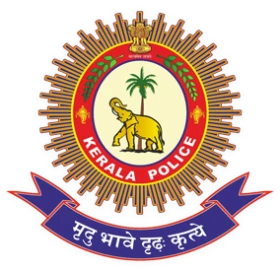- Emergency Helpline No. 112
- യോദ്ധാവ് 9995 966 666


കൊല്ലം സിറ്റി പോലീസ്
കേരള പോലീസ്
നേട്ടങ്ങളും അംഗികാരവും
പ്രസിദ്ധീകരണങ്ങൾ
വിഭാഗങ്ങള്
ജനറല് എക്സിക്യൂട്ടീവ്
പോലീസ് സ്റ്റേഷനുകൾ
- കൊല്ലം ഈസ്റ്റ് പോലീസ് സ്റ്റേഷന്
- പള്ളിത്തോട്ടം പോലീസ് സ്റ്റേഷന്
- കൊല്ലം വെസ്റ്റ് പോലീസ് സ്റ്റേഷന്
- അഞ്ചാലുംമൂട് പോലീസ് സ്റ്റേഷന്
- സൈബര് ക്രൈം പോലീസ് സ്റ്റേഷന്
- വനിതാ പോലീസ് സ്റ്റേഷന്
- ശക്തികുളങ്ങര പോലീസ് സ്റ്റേഷന്
- ട്രാഫിക് പോലീസ് സ്റ്റേഷന്
- ഇരവിപുരം പോലീസ് സ്റ്റേഷന്
- കിളികൊല്ലൂര് പോലീസ് സ്റ്റേഷന്
- കൊട്ടിയം പോലീസ് സ്റ്റേഷന്
- ചാത്തന്നൂര് പോലീസ് സ്റ്റേഷന്
- പരവൂര് പോലീസ് സ്റ്റേഷന്
- പാരിപ്പള്ളി പോലീസ് സ്റ്റേഷന്
- കരുനാഗിപ്പള്ളി പോലീസ് സ്റ്റേഷന്
- ഓച്ചിറ പോലീസ് സ്റ്റേഷന്
- ചവറ പോലീസ് സ്റ്റേഷന്
- ചവറ തെക്കുംഭാഗം പോലീസ് സ്റ്റേഷന്
- നീണ്ടകര കോസ്റ്റല് പോലീസ് സ്റ്റേഷന്
Organizational Structure
പൊതുവായ വിവരങ്ങള്
വിവരാവകാശം
ഗാലറി
കുറ്റകൃത്യങ്ങളുടെ സ്ഥിതി വിവര കണക്കുകള്
- കുറ്റകൃത്യങ്ങളുടെ ആകെ സ്ഥിതി വിവര കണക്കുകള്
- ഐ .പി .സി വിഭാഗം
- എസ് .എസ് .എല് വിഭാഗം
- കുട്ടികള്ക്ക് എതിരെയുള്ള കുറ്റകൃത്യങ്ങളുടെ സ്ഥിതി വിവര കണക്കുകള്
- സ്ത്രീകള്ക്ക് എതിരെയുള്ള കുറ്റകൃത്യങ്ങളുടെ സ്ഥിതി വിവര കണക്കുകള്
- SC ST Atrocities Act Cases
- Cyber Cases
- Missing Cases
- റോഡ് അപകടങ്ങളെ കുറിച്ചുള്ള സ്ഥിതി വിവര കണക്കുകള്
- Cigarettes and Other Tobacco Products Act, 2003 (COTPA)- പ്രകാരം ഉള്ള കേസുകളുടെ സ്ഥിതി വിവര കണക്കുകള്
- Protection of Children from Sexual Offences Act- പ്രകാരം ഉള്ള കേസുകളുടെ സ്ഥിതി വിവര കണക്കുകള്
ഡൗൺലോഡ്





